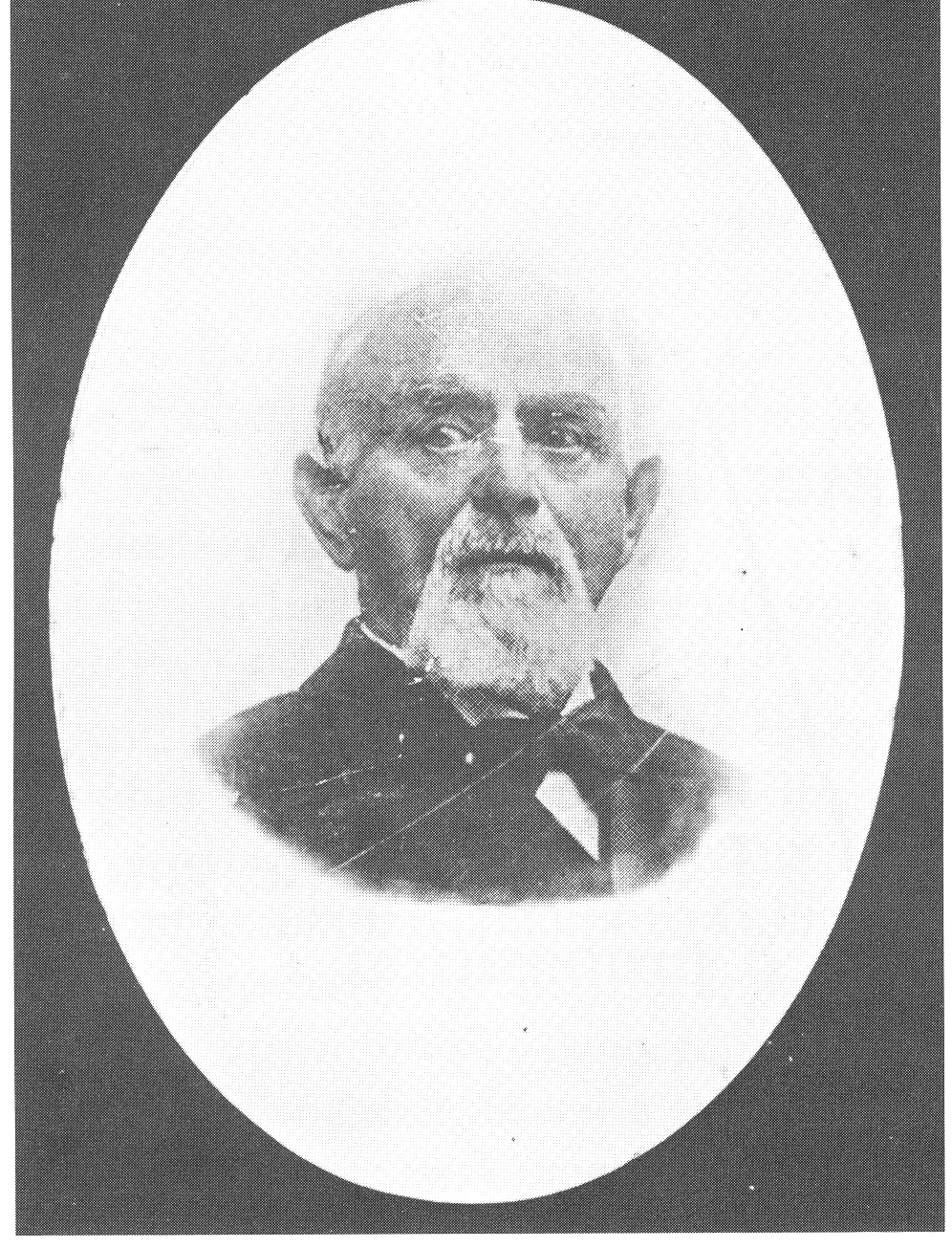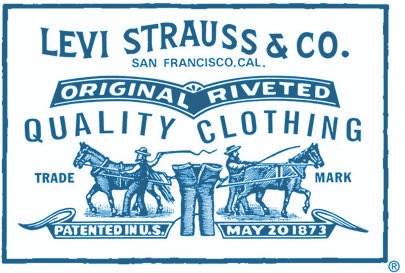In 1854, a Jewish Latvian immigrant named Jacob Youphes arrived in New York, whose harbor was not yet adorned by the Statue of Liberty.Youphes—his name now changed to Jacob Davis—was a tailor, but over the next few years in places like Augusta, Maine, Websterville, Calif., San Francisco and at gold diggings in British Columbia, he did whatever he could to make a living. In Virginia City, Nev., he ran a tobacco shop, which failed. But in Reno, after first working in a brewery and then opening his own tailor shop, he scored—and the Reno Historical Resources Commission has decided to install a historic marker at the former location of his tailor shop.Davis’ invention was blue jeans, also known as dungarees, also known as Levi’s. In December 1870, he made a pair of pants for a laborer whose wife complained that most trousers were not durable enough for local working men, particularly along the portion of the seam where the pockets were attached. Davis had been experimenting with different ways of sewing pants to make them stronger. For the woman, he made a pair of pants from 10-ounce duck twill. As he was stitching them up, he said later, he noticed some copper rivets that he used on horse gear lying nearby."And the thought struck me to fasten the pockets with those rivets,” he said later.He sold the pants for $3 and the next month sold four more pairs, then 10 in February. He didn’t realize what was happening at first, but soon he was turning the riveted pants out full-time, and he also started making some of them from a blue denim material he purchased from a San Francisco wholesaler. He soon decided he needed a patent.Davis wrote to Levi Strauss and Company, where he had a fabric-supply account. After informing them of his invention, he wrote: "Therefore Gentleman, I wish to make you a Proposition that you should take out the Latters Patent in my name as I am the inventor of it, the expense of it will be about $68, all complit and for these $68 I will give you half the right to sell all such clothing Revited according to the Patent, for all the Pacific States and Teroterious, the balance of the United States and half of the Pacific Coast I resarve for myself.”Levi’s was then a distributor, not a manufacturer. The company mostly sold clothing made in New York sweatshops. But offered the opportunity of Davis’s invention, the company decided to get into manufacturing, with Davis at the helm as head of production (where he would add another distinctive feature of the pants—the orange stitching on the back pockets, the color chosen to match the rivets).The patent application was rejected several times by the patent office but finally granted jointly in the names of Davis and Strauss and Company on May 20, 1873. By then, Davis had already departed Reno for San Francisco to operate what amounted to an elaborate tailor shop for Strauss (he delivered his first pants to the company on June 2) and then, when more output was needed, to open and run a new Strauss manufacturing plant. The rest is history.Davis provided the cut and fit of the pants. He added riveted jackets to the Strauss line, and that first year the company sold more than 21,000 pieces of riveted clothing for $43,510, prompting other firms to start making copies in violation of the patent. The first Strauss version of Davis’ pants was known as the Double XX denim pants and would become known by their lot number, 501. (There are now many numbered Levi’s jeans, all beginning with a 5.)

He remained with Strauss the rest of his career, taking over shirt lines as well as pants, and was succeeded in the job by his son Simon, who ended up running the company. Simon was instrumental in the company’s rebuilding after the 1906 earthquake and designed a coverall that became the company’s first nationally marketed product.By the turn of the century, the company charged $8.50 for a pair of blue jeans.After the expiration of the patent in 1890, Strauss began cranking out a less expensive version of Double XX to compete with a sudden flood of blue jeans on the market made by other companies.Strauss was a regional company, and for decades jeans were a very small part of its business and were sold mostly to workers. (Jacob Davis went to New York in 1876 and opened a plant, J. Strauss, Brother and Company, which shut down after Jonas Strauss’s death nine years later.) One company official was quoted saying, "To be honest, at first we didn’t look beyond the cowboy/miner/laborer market in California, Arizona, Nevada, and maybe Colorado and Utah and, in a minor way, Oregon and Washington.”About 1940, jeans started to catch on among other demographic groups, probably starting on campuses, and began the climb to become a national product and an icon.The pants evolved. The blue denim was improved and its color standardized. In 1934, the rivets were covered so they would not damage surfaces like benches or saddles. "Lady Levi’s” were sold in the 1930s and ‘40s but were discontinued. Although two labels were added to the back of the pants (a ribbon on a pocket seam and a leather patch at the waist), the company refused to add the union label to its union-made pants.Author Ed Cray wrote, "Only two elements were inviolable: Jacob Davis’s sixty year old cut and fit of the pants and the quality of the ten ounce denim manufactured by Cone Mills” for Strauss.The term "Levi’s,” though, was not the company’s—it originated with the public, just as the public invented the term "coke” for Coca-Cola. But when the public started referring to the pants generically as "Levi’s,” the company quickly trademarked it.Unfortunately, because Davis didn’t insist on his name being included in the product name, Levi Strauss’ name alone became a synonym for the pants, leading to the spread of a myth that Strauss invented them. The record was corrected by National Archives official Ann Morgan Campbell, who published a scholarly article on the subject in 1974, but the myth lived on.An example of Davis’ lost legacy can be found on the Massachusetts Institute of Technology’s on-line Inventor Archive. One of its entries describes how Davis invented blue jeans but also says, "No item of clothing is more quintessentially American than the blue jeans invented and perfected in the mid-19th century by Levi Strauss.” In response to an inquiry, an MIT spokeswoman said the designation is justified because Strauss paid for the patent application and was listed as co-owner of the patent. Government paperwork apparently has intrinsic worth.The belief that Strauss invented the pants was fostered by a lack of institutional memory in the company and by company spokespeople themselves. In 1988, when a delegation of Soviet dignitaries were outfitted for blue jeans in Reno at a Kietzke Lane store, a press release said it was happening in the city "where [jeans] were invented.” A spokesperson for Levi Strauss denied the claim, saying that Strauss himself had invented the pants.This began to change in December 1989, when the corporation established an archives and hired a professional archivist, Alison Moore, and a historian, Lynn Downey, to run it. In February 1992, the two sent out an appeal asking for help in reconstructing the company’s records. (The bulk of the early archives were destroyed in the 1906 earthquake.) In more recent years, the company has been more willing to give Davis credit. He is mentioned on the company Web site, though the site is so difficult to navigate that those mentions are hard to locate.Davis’ Reno tailor shop was at 31 Virginia St., an address that no longer exists. The marker will probably be installed in the sidewalk rather than upright. May of next year is the target because it will be the anniversary of the patent, according to commissioner Mella Harmon. Harmon says much of the impetus for the project came from Robert Wexler of Reno.

